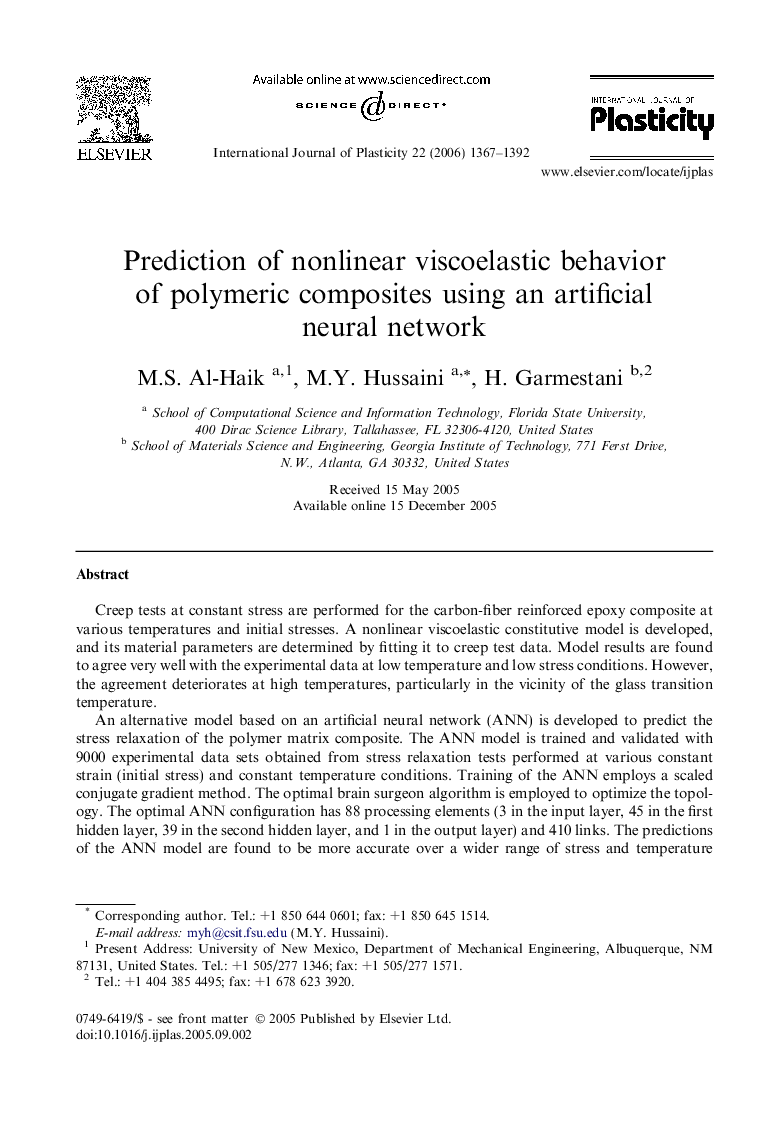| Article ID | Journal | Published Year | Pages | File Type |
|---|---|---|---|---|
| 784683 | International Journal of Plasticity | 2006 | 26 Pages |
Creep tests at constant stress are performed for the carbon-fiber reinforced epoxy composite at various temperatures and initial stresses. A nonlinear viscoelastic constitutive model is developed, and its material parameters are determined by fitting it to creep test data. Model results are found to agree very well with the experimental data at low temperature and low stress conditions. However, the agreement deteriorates at high temperatures, particularly in the vicinity of the glass transition temperature.An alternative model based on an artificial neural network (ANN) is developed to predict the stress relaxation of the polymer matrix composite. The ANN model is trained and validated with 9000 experimental data sets obtained from stress relaxation tests performed at various constant strain (initial stress) and constant temperature conditions. Training of the ANN employs a scaled conjugate gradient method. The optimal brain surgeon algorithm is employed to optimize the topology. The optimal ANN configuration has 88 processing elements (3 in the input layer, 45 in the first hidden layer, 39 in the second hidden layer, and 1 in the output layer) and 410 links. The predictions of the ANN model are found to be more accurate over a wider range of stress and temperature conditions than those of the explicit nonlinear viscoelastic model, in particular near the glass transition temperature.
